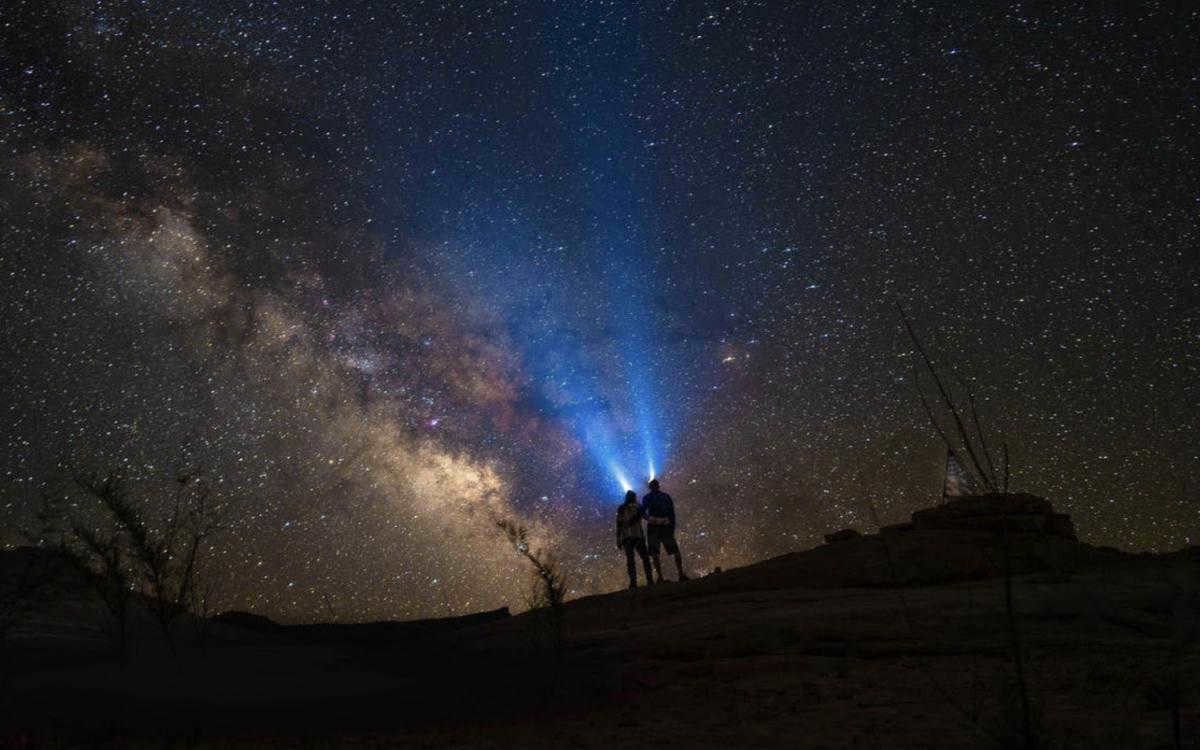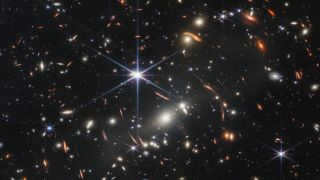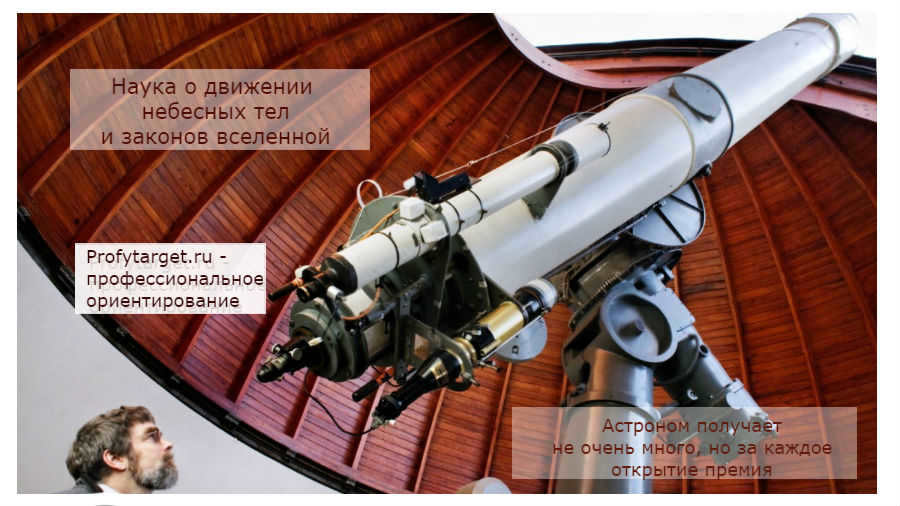
In August of 2023, individuals on Earth may have the opportunity to witness the rare occurrence of two super moons appearing simultaneously in the sky. If you have a deep fascination for such celestial events and dream of cultivating an engaging and intellectually stimulating hobby, then astronomy may be the perfect pursuit for you. In this article, an expert in the field of astronomy, Stanislav Korotsky, will provide you with valuable insights on how to embark on your journey of exploring and understanding the vastness of space.
About the expert: Stanislav Korotsky is an esteemed astronomer who serves as the scientific director of the renowned observatory “Ka-Dar” and the esteemed club of scientific travel “Astrovert”. Additionally, he is the visionary behind the creation of the highly informative and educational resource AstroAlert.
Tips for selecting a telescope
For a beginner, it’s not advisable to immediately invest in an expensive telescope. It’s best to start with a telescope that has a diameter of around 90-150 mm. If you plan on observing the night sky in a city, you’ll only have access to planets and the Moon, as faint objects won’t be visible due to light pollution. In this case, a 90-120 mm refractor telescope would be sufficient. A refractor telescope uses a system of lenses to collect light. However, if you want to observe nebulae and galaxies, you’ll need a reflector telescope with a diameter of around 150 mm or larger. Unlike a refractor, a reflector doesn’t have chromatic aberrations, which are image distortions such as multicolored halos around bright objects. I recommend telescopes with Dobson alt-azimuth mounts for beginners. They are easy to use and don’t require any special skills or setup. You simply point and look! Personally, I’m not a fan of electronically controlled telescopes because they often run out of batteries quickly in winter, and the remote control or rotation mechanism can freeze due to hardened lubricant. Plus, setting up the electronics can be a daunting task for beginners. I suggest starting by looking through someone else’s telescope and then deciding whether to buy your own. Many regions have astronomy clubs that organize free public observation sessions several times a year. You can find lists of clubs in Russia on the AstroAlert page on VK.
- In the northern regions, there are phenomena called white nights or polar day, where the sun doesn’t fully set during the summer months, making it difficult to see the stars at night.
- On the other hand, the southern part of the sky is home to all the planets and the most striking and captivating parts of the Milky Way, making it a better location for stargazing and observation.
That is why both amateur and professional stargazers opt for heading south, to the mountains, and preferably during the new moon, when our planet’s natural satellite is absent from the night sky. One prime example of a location that meets these criteria is the largest Special Astrophysical Observatory in the country, which is part of the Russian Academy of Sciences and is situated in Arkhyz at an elevation of 2070 meters. This observatory boasts a range of telescopes catering to both professional astronomers, such as the six-meter BTA telescope exclusively used by scientists, and amateur stargazers, who can utilize the Astroferm Astroverti. The latter offers various telescopes for nighttime and daytime observations, as well as lectures, tours, and astrophotography lessons.
What to observe in the sky to make it interesting
Stanislav Korotsky suggests starting by observing the most brilliant celestial objects.
- The Moon: abundant craters, chasms, valleys, and mountains. In August 2023, there will be two supermoons (when a full moon comes extremely close to Earth and appears significantly larger than usual) on the 1st and 31st.
- Jupiter: streaks of clouds, the Great Red Spot, its four largest moons, and the shadows they cast.
- Saturn, its majestic rings, and various moons.
- Mars, its polar caps, red valleys, mountains, and occasionally clouds or sandstorms.
- Eclipses: both lunar and solar.
- Bright comets, their tails, nucleus, and coma (a cloud of dust and gas surrounding the comet).
- Observing meteor streams and bright meteors, known as bolides, is an exciting activity for stargazers. One such meteor stream, the Perseids, will be visible from July 17 to August 24, 2023. The peak of this phenomenon is expected on the 13th of August.
- Another interesting celestial event is when the Moon covers stars and planets in its path.
- Conjunctions occur when the Moon and planets align, or when planets align with each other.
- If you’re interested in exploring deep space, you can observe bright galaxies, nebulae, and star clusters. The Messier catalog contains 110 objects of this kind.
- With the help of a special filter, you can observe sunspots, flares, prominences, and fibers on the Sun.
- Even without a telescope, you can enjoy the mesmerizing phenomenon of the northern lights, also known as the polar lights.
Useful applications and devices
There are numerous smartphone and PC applications available for celestial navigation. Among the most popular and high-quality ones are Star Walk 2, Stellarium, and SkySafari. Additionally, a green laser pointer is an excellent tool for learning. It typically costs around ₽1-4 thousand.
Recommended communities, reading materials, and videos
Stanislav Korotkiy:
“In addition to regional astronomy clubs, there are several online communities on social media platforms. The key is to select the specific celestial objects you wish to observe, such as comets, planets, the Moon, silver clouds, or auroras.”
I can also suggest an astronomical portal called “Astroforum” which offers a wide range of topics and sections. The AstroAlert group provides updates on astronomy news, unexpected and unpredictable phenomena, as well as information on what, where, and when you can observe in the sky. Additionally, the channel “Cosmos Just” focuses on releasing news related to theoretical astronomy.
Astrophysicist Sergey Popov and astronomer Vladimir Surdin conduct astronomy lectures, and they also write informative books on the subject. If you’re interested, you can explore a collection of fascinating lectures in Russian. Furthermore, you can watch videos featuring these experts in the “Talks” section on the RBC Trends YouTube channel.
The top festival among all is Astrofest. It stands out as the biggest yearly gathering of astronomy enthusiasts from Russia and other Russian-speaking nations. This remarkable event occurs twice a year. The first one is held in the spring, either in late April or early May, in the Moscow region. The second one takes place in November in Moscow.
Astronomy originated from the timeless fascination that humanity has always had towards the sky, adorned with countless stars.

Distant galaxies are spread throughout the field of view of the James Webb Space Telescope. (Image credit: NASA, ESA, CSA, and STScI)
- Frequently Asked Questions about Astronomy
- History: The Origins
- Astronomy’s History: The Telescope
- Astronomy’s History: Modern Era
- Various Types of Astronomy
- Astronomy Across the Entire Spectrum
- Challenges in Astronomy
- Astronomy versus Astrology
- Careers in Astronomy
- Additional Resources
- References
Astronomy is a discipline that has been around for centuries, starting with the simple act of observing and recording stars and constellations with the naked eye. Today, it has evolved into an impressive display of human technological prowess.
Despite the centuries of progress in astronomy, scientists continue to strive to comprehend the essence of the cosmos and humanity’s role within it. This inquiry has become even more intricate as our knowledge of the universe has expanded through advancements in technology.
With the unveiling of the vast expanse of the heavens to our increasingly advanced telescopes, and the advent of sensitive detectors capable of detecting the most peculiar signals, the celestial display that our predecessors marveled at has transformed into a menagerie of astonishing phenomena, including black holes, white dwarfs, neutron stars, and supernovas.
Simultaneously, the optical illusion of two-dimensional constellations, which fascinated early sky-watchers, conceals the swirling of galaxies hurtling through spacetime, unveiling a tale that originated with the Big Bang around 13.8 billion years ago.
This is the evolution of astronomy’s narrative and our comprehension of the cosmos.
Common Questions about Astronomy
What is the study of astronomy?
The study of astronomy involves the use of mathematics, physics, and chemistry to explore and understand celestial objects and phenomena.
What are the different branches of astronomy?
Astronomy is a diverse field that encompasses various sub-disciplines, including observational astronomy, theoretical astronomy, planetary science, astrophysics, cosmology, and astrobiology. It cannot be simply categorized into four types.
What is the focus of astronomy studies?
In the field of astronomy, researchers delve into the composition and origins of the cosmos, encompassing celestial bodies like stars, planets, galaxies, and even enigmatic entities such as black holes. Through a combination of empirical observations and theoretical frameworks, astronomers strive to unravel the fundamental mysteries of our universe.
How does astronomy differ from astrology?
While astrology is commonly regarded as a pseudoscience that endeavors to interpret the influence of celestial objects, such as planets, on human lives and events, astronomy takes a scientific approach to investigating the universe. By employing mathematical, physical, and chemical principles, astronomy aims to comprehensively comprehend the intricacies of the cosmos.
Many people today are unable to comprehend the breathtaking sight of a clear, starry sky that ancient tribes and early civilizations were fortunate enough to witness, as they are constantly surrounded by the artificial glow of urban lighting. However, we can imagine the fascination our ancestors must have felt towards this magnificent display by observing the significant role that sky-watching played in their lives.
Ancient civilizations constructed remarkable structures like Stonehenge in the U.K., which is over 5,000 years old, to track the movement of the sun in the sky. This allowed them to keep track of time and organize their lives according to the changing seasons. Artifacts dating back thousands of years, such as the bronze-age Nebra disk, have been discovered, showcasing depictions of the moon and stars. In fact, the Nebra disk is considered the oldest star map in the world.
Around 1,000 B.C., the Ancient Assyro-Babylonians meticulously observed and documented the recurring movements of celestial bodies, as stated by the European Space Agency (ESA). Early China also possesses similar records. In fact, according to the University of Oregon, astronomy can be regarded as the earliest form of science due to the existence of the oldest written records pertaining to it.
The Ancient Greeks took sky-watching to a whole new level. Aristarchus of Samos made the initial (albeit highly inaccurate) attempt to calculate the distance between Earth and the sun and moon. Additionally, Hipparchus, often considered the father of empirical astronomy, compiled a catalog of the positions of over 800 stars solely using the naked eye. He also developed the brightness scale that remains in use today, as noted by ESA.
History of astronomy: The advent of the telescope
Throughout the Middle Ages, the field of astronomy continued to progress in Asia and the Islamic world. Scholars in the Islamic world built upon the knowledge of the Ancient Greeks, expanding on the catalog established by Hipparchus. Additionally, they created new instruments for measuring celestial positions, such as the quadrant and the sextant, as noted by ESA.
However, the true breakthrough in humanity’s exploration of the cosmos came with the invention of the telescope in the 17th century. Italian astronomer Galileo Galilei was an early adopter and innovator of this technology, which allowed him to make significant advancements in our understanding of the solar system.
Renowned as the “father of modern science” according to the esteemed Albert Einstein, Galileo possessed the ability to illustrate the lunar surface, uncover the primary moons of Jupiter, identify sunspots on the sun, and achieve much more, all thanks to the remarkable invention known as the telescope.
The creation of the telescope revolutionized the field of astronomy. Despite facing opposition from the Catholic Church, the understanding that Earth was not the center of the universe, but instead revolved around the sun alongside other planets and their moons, became undeniable.
During this era, astronomy played a pivotal role in aiding seafarers and travelers in their navigation of the globe. As a result, government-funded observatories, such as the Paris Observatory and the Royal Greenwich Observatory, were established in 1667 and 1675, respectively, with the objective of constructing more precise stellar maps.
During the 18th century, astronomers achieved a significant breakthrough by successfully determining the distance of a star located nearby. This breakthrough introduced a third dimension to stellar catalogs, revolutionizing the field of astronomy.
In the 19th century, the invention of photography greatly simplified the process of mapping the night sky and led to a rapid expansion of stellar position catalogs. According to the European Space Agency (ESA), these catalogs grew from only a few thousand stars to tens of thousands. The first photographs of the moon and sun were published in the 1840s, followed by the groundbreaking images of Vega, the first star to be captured on film, approximately ten years later.
The revelation of spectroscopy, a field that examines how matter can divide light into various wavelengths based on its chemical makeup, unveiled fresh and entirely unforeseen opportunities for astronomical investigations in the latter half of the 19th century. By means of spectroscopy, astronomers were able to scrutinize the chemical composition of celestial entities, starting with those in close proximity like the moon and the sun, and subsequently expanding their studies to encompass more distant entities such as other stars and even galaxies. Suddenly, the realm of astronomy extended beyond mere spatial positioning within the universe, encompassing the fundamental characteristics of celestial bodies.
The Rise of the Modern Era in Astronomy
In tandem with the rapid advancements in technology during the 20th century, astronomers experienced a significant leap forward in their ability to observe distant objects and conduct more precise analysis.
During the early 20th century, significant advancements in telescope technology prompted astronomers to wonder for the first time whether the Milky Way was the entirety of the universe or just one of many galaxies scattered throughout space. In the 1920s, American astronomer Edwin Hubble provided an answer to this question when he successfully identified individual stars within the Andromeda nebula, which is now known as the Andromeda galaxy, and subsequently determined their distances from Earth. These stars were located much further away than anything else in our own galaxy, leading Hubble to conclude that Andromeda is a separate entity from the Milky Way. This discovery unveiled a new and much more expansive universe to the astonishment of astronomers.
Galaxies were soon confirmed as other “nebulas”. Astronomers realized within ten years that these nebulas were moving away from Earth at a faster rate the further they were, as reported by Science News. This discovery led to the concept that the universe was expanding, likely from a massive explosion that occurred in the ancient past. Thus, the Big Bang theory was born.
The Second World War accelerated technological progress even more, leading to the era of spaceflight and the exploration of the universe from outer space. What would have been considered science fiction just a few decades ago was rapidly becoming a reality.
In 1957, Sputnik, the first-ever satellite, was launched by the U.S.S.R. This marked the beginning of a new era, as satellites became equipped with increasingly complex scientific instruments, providing valuable insights into the orbital environment surrounding Earth. The exploration of other planets followed shortly after, with NASA’s Mariner 2 becoming the first spacecraft to visit Venus in 1962. The U.K.’s Ariel 2 also made a significant contribution to space exploration in 1964, as it became the first radio astronomy satellite to enter orbit.
The 1960s witnessed a fierce space race, which reached its pinnacle with the historic moon landings of the Apollo program. These groundbreaking missions allowed scientists on Earth to hold in their hands pristine pieces of rock from an extraterrestrial body for the very first time. The U.S.S.R. also celebrated its own triumphs during this period, notably with the lunar rover Lunokhod, which analyzed 25 lunar soil samples using its onboard instruments.
Since that time, numerous missions have been dispatched to investigate celestial bodies within the solar system, including planets, comets, moons, and asteroids. Space telescopes, in combination with increasingly advanced ground-based telescopes, have provided a detailed view of the star-filled sky that would have been unimaginable to ancient tribesmen.
The James Webb Space Telescope, which was launched on Christmas Day in 2021, represents the culmination of this timeless endeavor that began thousands of years ago and has grown from modest origins. However, as astronomers continue to observe, more and more questions arise, and the answers to the fundamental questions about the nature of the universe and our place within it remain elusive.
Categories of astronomy
In the past century, the field of astronomy has been divided into two main categories – observational astronomy and theoretical astronomy. Observational astronomy involves the use of telescopes and cameras to gather data about celestial objects and phenomena. Theoretical astronomy, on the other hand, involves the analysis, modeling, and theorizing based on the observational data.
While these two categories complement each other, modern astronomy encompasses various subsets that overlap and contribute to the understanding of the universe. These subsets include astrometry, which focuses on the measurement of celestial positions and motions, and exoplanetology, which investigates planets outside of our solar system. Here is a breakdown of the different subsets within astronomy:
- Astrometry: Astrometry is an ancient field of astronomy that involves precise calculations of the movements of the sun, moon, and planets. It encompasses the prediction of solar and lunar eclipses as well as meteor showers. Astrometry also encompasses exoplanetology, a newer and highly exciting area that involves the discovery and characterization of planets beyond our solar system.
- Planetary astronomy: How did our solar system come into existence? This is the fundamental question explored in planetary astronomy, which focuses on the formation, evolution, and ultimate demise of planets, moons, and other celestial bodies within our solar system. It also includes the study of planetary geology.
- Astrophysics: The field of astrophysics involves the application of physics laws and theories to analyze astronomical observations. It aims to comprehend the mechanism underlying the creation and evolution of the universe.
- Astrochemistry: Astrochemists investigate the composition and reactions of atoms, molecules, and ions in space.
- Astrobiology: Astrobiology, an emerging and predominantly theoretical branch of astronomy, focuses on the study of life beyond Earth.
- Stellar astronomy: Stellar astronomy explores the life cycle and structure of the sun and stars. It encompasses the classification of stars and stellar populations.
- Galactic astronomy: Astronomers investigate our galaxy, the Milky Way, while extragalactic astronomers observe beyond it to determine the formation, evolution, and demise of these star clusters.
- Cosmology: While sometimes used interchangeably with astronomy, cosmology specifically refers to the scientific study of the origin and nature of the universe. The fundamental concept in cosmology is the Big Bang Theory, which is widely accepted as the explanation for the beginning of the universe. Cosmology also encompasses theoretical subjects such as string theory, dark matter and dark energy, and the concept of multiple universes.
The field of astronomy encompasses the exploration of the different segments of the electromagnetic spectrum, which include radio, microwave, infrared, visible, ultraviolet, X-ray, and gamma rays. In order to gain a comprehensive understanding of the universe, astronomers must investigate these various wavelengths of light.
Optical astronomy involves the examination of celestial objects using telescopes that are designed to observe visible light. Infrared light can be detected beyond the Earth’s atmosphere, allowing for observations to be made by space-based observatories such as the Hubble Space Telescope and the James Webb Space Telescope. Radio astronomy, on the other hand, focuses on the study of the sky in terms of radio frequencies; radio telescopes are utilized to detect and amplify radio waves emitted from space.
The challenge in the field of astronomy
Astronomers face a unique challenge in their study of the universe. Despite the multitude of branches within this field, they can only capture a single moment in time when observing planets, stars, and galaxies. To gain a comprehensive understanding, astronomers must often overlap their research across different areas, in order to piece together a more complete picture of these celestial objects that have existed for millions, or even billions, of years.
Exciting advancements in technology are on the horizon, poised to revolutionize the field of astronomy. The James Webb Space Telescope is just the beginning. In the coming years, we can expect the launch of several groundbreaking Earth-based telescopes, such as the Vera Rubin Observatory, which will conduct a comprehensive all-sky survey. Additionally, the Extremely Large Telescope and the Square Kilometre Array, the largest radio telescope in the world, will further expand our capabilities in exploring the cosmos.
Astronomers are on the verge of delving deeper into the vastness of space in order to observe uncharted regions and unexplored celestial objects.
The distinction between astronomy and astrology
Astronomy and astrology originated from the same origins. Ancient civilizations and early tribes believed that the heavens exerted influence over their lives, and by studying the movements of celestial bodies, one could gain insight into the future.
The enduring connection between these two fields has endured for centuries. During the period of the Renaissance, astronomers were often employed as personal advisors to monarchs, providing guidance on decisions based on the positions of stars and planets, according to Astronomica.
However, as time went on, the scientific method gained more influence, causing a divergence between astronomy and astrology. Nowadays, astronomy focuses on data-driven observations and verifiable predictions, using cutting-edge technology. On the other hand, astrology has been relegated to the realm of new-age superstition, where less educated practitioners make predictions about one’s life using glass crystals and simplistic star charts.
Interestingly, astronomers have pointed out that Earth’s irregular orbit means that the position of the sun within the zodiac signs, which are the foundation of western astrology and were identified centuries ago, no longer aligns with the actual position of the sun. This means that even if you were told you were born under the sign of Taurus, you could actually be an Aries.
Opportunities in the Field of Astronomy
If you have a passion for stargazing and dream of pursuing a career in astronomy, there are valuable resources available to guide you along your path. The International Astronomical Union’s website offers insightful information on what it takes to become an astronomer. Additionally, the Careers section of the Royal Astronomical Society provides useful resources for those interested in the field.
If you have already made progress in your journey and are searching for suitable job openings based on your qualifications, the American Astronomical Society’s jobs register site lists a wide range of opportunities worldwide.
If you are curious about the potential earnings in an astronomy-related career, the SciJournal has compiled a list of the top ten highest-paying jobs in the field of astronomy.
Additional resources
Explore this comprehensive three-part series by the European Space Agency on the rich history of astrometry, spanning from ancient times to the present day. Delve into the remarkable advancements in our understanding of the universe during the first half of the 20th century through this captivating ScienceNews feature. Gain a deep insight into the evolution of astronomy in the post-war era with this meticulously crafted article by the Royal Society. For a fascinating exploration of the early days of the telescope and the profound influence of Galileo Galileo on modern astronomy, refer to this enlightening article by the Library of Congress.
On September 1, 2019, the European Space Agency published an article titled “A history of astrometry – Part I – Mapping the sky from ancient to modern times”. The article explores the ancient and modern techniques used to map the sky. It can be found at https://sci.esa.int/web/gaia/-/53196-the-oldest-sky-maps.
Continuing their series on astrometry, the European Space Agency released “A history of astrometry – Part II – Telescopes ignites the race to measure stellar distances” on September 1, 2019. This article delves into the use of telescopes to measure stellar distances. The full article can be accessed at https://sci.esa.int/web/gaia/-/53197-seeing-and-measuring-farther.
In the next installment of their astrometry series, the European Space Agency presents “A history of astrometry – Part III – Astrometry moves to space: The mapmakers guide to the galaxy”. This article discusses the transition of astrometry to space and the advancements it brought. The article can be read at https://sci.esa.int/web/gaia/-/53198-astrometry-in-space.
On June 9, 2022, the Royal Society published a blog post titled “A brief history of astronomy, astrophysics and cosmology 1945-2000”. The post provides a concise overview of the developments in these fields during the specified time period. The full post can be found at https://royalsociety.org/blog/2022/06/brief-history-of-astronomy-astrophysics-and-cosmology-1945-2000/.
ScienceNews, In the 20th century, astronomers expanded their horizons to an immense number of galaxies, on February 2, 2017
https://www.sciencenews.org/blog/context/20th-century-astronomers-opened-their-minds-gazillions-galaxies
Library of Congress, Galileo and the Invention of the Telescope, https://www.loc.gov/collections/finding-our-place-in-the-cosmos-with-carl-sagan/articles-and-essays/modeling-the-cosmos/galileo-and-the-telescope
Be a part of our Space Forums to continue discussing space exploration, the latest missions, and the night sky. If you have any news tips, corrections, or comments, feel free to reach us at: [email protected].
Subscribe to the Space.com Newsletter
Stay updated with the latest space news, get the latest information on rocket launches, and be in the know about upcoming skywatching events and more!
By providing your details, you confirm that you have read and agree to the Terms & Conditions and Privacy Policy and that you are at least 16 years old.

It’s worth gazing upwards and observing the celestial sky, as a myriad of inquiries immediately come to mind: how numerous are the stars in the vast expanse, how can one locate specific constellations, and what does this have to do with bears? If you desire to explore the answers to these and various other inquiries concerning the stars alongside your children, then acquaint yourself with this compilation of captivating literature centered around the ancient and anything but tedious field of astronomy.
1. “The Incredible Exploits of a Young Astronomer”, Efrem Levitan

There is a scarcity of fiction books in the realm of popular science literature for children that delve into the captivating world of stars, space, and the universe. However, amidst the limited selection, the stories penned by the renowned educator Efrem Levitan shine brightly. His books have garnered immense interest and adoration from readers, leading to regular reprints in both Russian and other languages. Through Levitan’s enchanting narratives, children are able to effortlessly acquaint themselves with the fundamentals of astronomy, unravel the mysteries of the stars and planets, and find answers to their countless inquiries.
The book is written in a very simple language, despite the abundance of terms. There are no dull encyclopedic facts or debates about who, when, and how the first person was in space. Instead, there are numerous enchanting, heartwarming, and highly entertaining stories.
Target Audience. This book is suitable for preschoolers and elementary school children, as well as anyone who is not afraid to have a conversation with the stars.
2. “Secrets of our sun”, by Efrem Levitan

Levitan has written another popular science encyclopedia on astronomy for children, presented in the form of a storybook.
Can such a complex subject like astronomy be explained in a simple and engaging manner? Levitan believed it not only can be, but should be. To prove his point, he authored numerous books about the wonders of stars and planets specifically for young readers, with the main characters being his own children – Alka and Sveta.
Through informative dialogues with their father, the children will discover what the Sun is and how it moves across the sky, what the Sun’s rays are capable of, how the Sun behaves when disturbed, and even why people used to fear the Sun.
Joining forces with the protagonists of the novel, they will embark on a journey of astonishing revelations, perform extraordinary experiments, gain knowledge about protons and neutrons, and uncover the speed of a sunbeam. Accompanying them on this adventure will be the enchanting fairy gnomes, Knopkin and Nedouchkin.
Target Audience. This book is suitable for children aged five and above, as well as all those who have an affinity for extraordinary philosophical narratives and tales set in outer space.

Centuries ago, before mankind even attempted to count the countless stars scattered across the sky, astute observers divided this vast celestial expanse into distinct regions, defining them with invisible boundaries. These regions, known as constellations, were distinguished by their characteristic patterns and bestowed with names that often honored gods or legendary heroes. Each civilization had its own unique constellation boundaries and naming conventions, reflecting their own cultural identities. Today, we still benefit from the wisdom and contributions of ancient Mediterranean civilizations, particularly the Greeks, as evidenced by the prevalence of Greek names for stars and planets in our language.
This autumn, prepare to be enthralled by a captivating collection of 30 new books specifically crafted for the enjoyment of children and teenagers.
This book includes over twenty myths and legends that have been handed down from our ancestors to us. They were created while gazing at the night sky. For instance, there is a legend that the stars were scattered across the sky by the Black God. There is also a legend that the Small Dog is not a dog, but rather a fox. Additionally, there is the story of the Swan, who flies through eternity along the Milky Way. It is said that the Swan was once a man.
Who should read this book? This book is suitable for children and adults alike. It is perfect for those who enjoy reading about Greek mythology and enchanting fairy tales.
4. “Astronomy that Captivates. Chevostik’s Children’s Encyclopedias”, by Elena Kachur

“Are you curious to see what the current appearance of the Sun is? Unfortunately, this is not possible, even on a sunny day. Whenever we observe the Sun, we are actually seeing it as it appeared approximately eight minutes and 20 seconds ago. However, there is always a way. If we were to envision the Sun as an orange, then Jupiter would be comparable to a cherry in its proximity. Meanwhile, our Earth would be mere grains of sand in comparison. The Sun is so immensely large that if we were to combine the weight of all the planets, it would still be a thousand times greater in mass. As for the Moon, it does not produce its own light. The luminosity we witness during the night is actually sunlight reflecting off the Moon’s surface. Depending on the night, the Sun illuminates our planet’s satellite in various ways.”
Intended Audience. This book is designed for toddlers aged three and up. It is also suitable for parents who wish to learn how to discuss the wonders of the universe in a language that even a young child can understand.
5. "Professor Astrocot and his voyage through the cosmos," by Dominic Volliman and Ben Newman

All the stars visible from Earth are part of vast collections called galaxies, resembling enormous celestial vortices. Our galaxy is known as the Milky Way and takes on the form of a spiral whirlpool. It contains an immense number of stars, more than a person could possibly count in their lifetime. The Milky Way undergoes a slow rotation, completing a full revolution over a staggering span of 225 million years! Nestled at the core of our galaxy lies a massive black hole. This black hole also functions as an enormous vortex of space and time, defying the known principles of physics…
Professor Astrokot is inviting you on an incredible adventure, where he will share with you all the captivating knowledge that scientists have about the universe. Alongside a group of astronauts, children will discover where the Sun goes when night falls, the secrets hidden on the dark side of the Moon, how stars are born and extinguished, the composition of the planets in our Solar System, and the inner workings of spaceships, stations, and astronauts’ spacesuits. And perhaps even contemplate the possibility of extraterrestrial life.
Who should read this book? This book is suitable for boys and girls starting from the age of three, and for anyone who enjoys large, colorful, and informative books.
6. “Discovering the Constellations,” by Hans Augusto Rey

This book has been updated since its initial publication in 1954 and has captivated the minds of young stargazers ever since. The easily memorable constellation diagrams and comprehensible star maps will empower your child to become a true astronomy enthusiast, unveiling the wonders of our vast universe.
Within this book, children will gain knowledge about the appearance of the constellations in the Northern Hemisphere, the various stars within them, and the most radiant ones among them. They will also discover the optimal time and location for stargazing, as well as master the art of swiftly locating constellations.
This book is intended for:
- Kids who are seven years old and older
- True connoisseurs of the star theme
- Fans of the star theme
7. “Neskuchnaya astronomy”, Oksana Abramova

Up until the close of the previous century, the capabilities of astronomical devices were incapable of detecting celestial bodies as small and dim as planets. However, in the present era, science and technology are advancing at a rapid pace. Humanity refuses to relinquish its hope of discovering beings similar to themselves within the vast depths of space. And we most certainly have a chance. Out of one hundred stars akin to our Sun, 34 possess planets that are “suitable,” not only resembling our Earth, but also appearing to orbit their respective hosts within the habitable zone…
The book, written by the experienced astronomer Oksana Viktorovna Abramova, provides a captivating and easily understandable exploration of stars, planets, the Sun, the Moon, and stardust. It also delves into the fascinating field of scientific research on the universe, the characteristics of celestial bodies such as comets, asteroids, and meteors, and the significance of zodiacal constellations. The author explains the occurrence of solar eclipses, unveils the composition of space dust, and highlights the Moon’s importance as a loyal companion to the Earth.
Target Audience. This book is suitable for children aged seven and above, as well as curious individuals who have a thirst for knowledge and an interest in unexplored realms.
Is it the role of an astronomer to be someone who ventures into space and possesses extensive knowledge of the laws of the universe, while also providing warnings about eclipses and meteor showers? Their main objective is to forecast and examine the principles that govern the celestial world. The occupation of an astronomer is typically associated with imaginative scientists who have a natural inclination to explore the uncharted territories of the cosmos. Regrettably, they are not able to embark on space travel and instead observe the movements of celestial bodies from our planet. However, this is not the most unfavorable circumstance for astronomers, as the Earth serves as their vantage point, allowing them to witness and analyze all celestial events, similar to a commander on a battlefield.

Astronomer: Definition and Responsibilities
When trying to understand the role of an astronomer, it is helpful to consider the work of their fellow scientists. These scientists are typically found in a scientific laboratory, where their main focus is on studying the contents of test tubes, materials, and various substances. They conduct experiments, carry out research, and diligently record their findings in an observation log.
An astronomer, on the other hand, specializes in the study of the structure, motion, and laws governing celestial bodies such as planets, stars, and the universe as a whole. Instead of relying on standard laboratory equipment, they utilize a telescope as their primary tool, and their workplace is often an observatory.
By making observations, individuals in this profession establish a foundation of knowledge that serves as a basis for other scientists’ actions, such as launching spacecraft and conducting practical experiments. Their work involves reconnaissance, which enables the verification of the cyclical movements of celestial bodies and the protection of Earth’s vessels and orbital stations.
There are experts whose responsibilities involve observing celestial objects, and they are referred to as “observational astronomers”. Their main tasks include developing observation techniques and maintaining records.
Their counterparts, the theorists, engage in constructing theories about cosmology. They “turn back time” and are familiar with all the theories that mankind has developed regarding the origins of the universe.
This is just the beginning: the vast expanse of the Universe offers numerous focal points for specialized observers, guiding their paths of investigation. These include:
- celestial mechanics;
- astrophysics;
- cosmology;
- stellar dynamics;
- galaxy physics;
- stellar physics;
- radio astronomy;
- the structure of astronomical instruments and equipment.
A scientist can devote years to studying a specific component of the cosmos in order to unravel its enigma. Furthermore, understanding all the stars and constellations in the sky merely serves as a scientific “foundation” from which future astronomers embark on their journey.
Job Responsibilities of an Astronomer
In addition to conducting scientific research, theoretical astronomers often have teaching duties. They not only impart classroom knowledge but also mentor young scientists at the university. Their main objective is to start from the basics and provide a comprehensive understanding of the field of astronomy from A to Z.
However, the most exciting aspect of their work lies in observation and practical applications. Some of the key duties of an astronomer include:
- Maintaining order and ensuring the functionality of instruments and other scientific equipment at their workplace.
- Keeping a detailed record of observations made during the course of their work.
- Utilizing computer modeling to simulate and analyze significant astronomical events.
How to Pursue a Career as an Astronomer – Choosing the Right Institution
In order to become an astronomer in Russia, one must complete a university program. While not all high school graduates aspire to become astronomers, the entrance requirements for top universities remain high, with a minimum score of 270 points in three subjects. The key subjects that aspiring scientists will need to study include:
- Astronomy
- Modern Cosmology and the Challenges of the Universe
- Physics and Mechanics of Space and Natural Systems
When it comes to choosing an institution, many would immediately suggest Moscow State University. However, there are other options available as well. Prominent institutions that offer programs for aspiring astronomers include PFUR, MIPT, MEPhI, National Research University Higher School of Economics, Bauman Moscow State Technical University, and NITU MISIS.
The field of study is offered at various universities in Russia such as St. Petersburg State University, B.N. Yeltsin UrFU in Yekaterinburg, KFU in Kazan, DFU in Vladivostok, SGU in Sevastopol, and NNIGU in Novosibirsk.
Students undergo a specialized program of study that typically lasts for 5 or 5.5 years. Upon completion, graduates have the option to pursue a postgraduate program. In some cases, a bachelor’s degree can be obtained after 4 years of study. To obtain a full higher education, students will need to complete a master’s program.
- The significance of involvement in significant research;
- The allure of the occupation;
- Employment at an observatory.
The subsequent downsides can be identified:
Criterias for an astronomer
The following criteria are placed on the representative of the profession:
- Diligence;
- Analytical thinking;
- Spatial reasoning;
- Accountability;
- Ability to handle large amounts of data;
- Working with a computer.
Where can astronomers work?
Astronomers, being scientists, have the option to choose from various scientific organizations where they can work. Some of these organizations are:
- Main Astronomical Observatory (Pulkovo, St. Petersburg)
- Nizhny Novgorod Astronomical Observatory
- Lomonosov Moscow State University (Moscow)
- Space Research Institute of the Russian Academy of Sciences (Moscow)
- Physical Institute of the Russian Academy of Sciences (Moscow)
- Special Astrophysical Observatory of the Russian Academy of Sciences (Nizhny Arkhyz, Karachay-Cherkessia)
Astronomer Salaries: How Much Do They Earn?
Even young minds are curious about the earning potential of astronomers, a profession that is rarely taught in school but still captures the imagination of many.
The average salary for astronomers is around 25,000 rubles. However, there is potential for additional bonuses ranging from 30,000 to 70,000 rubles for significant discoveries.
Salary levels in astronomy vary depending on the chosen specialization:
- Star mapping: starting from 18,500 rubles;
- Universe modeling and research using specialized software: starting from 32.1 thousand rubles;
- Study of equipment and suggestions for improvement: starting from 20,000 rubles;
- Tracking space object trajectories and predicting future paths: starting from 28.5 thousand rubles;
- Stellar dynamics and celestial mechanics cost 25,230 rubles.
- Radio astronomy and astrophysics cost Br14,500.
- Cosmology, physics of cosmic bodies, and galaxies cost Br24,350.
- Research of the state of certain planets and stellar systems cost 24 thousand rubles.





